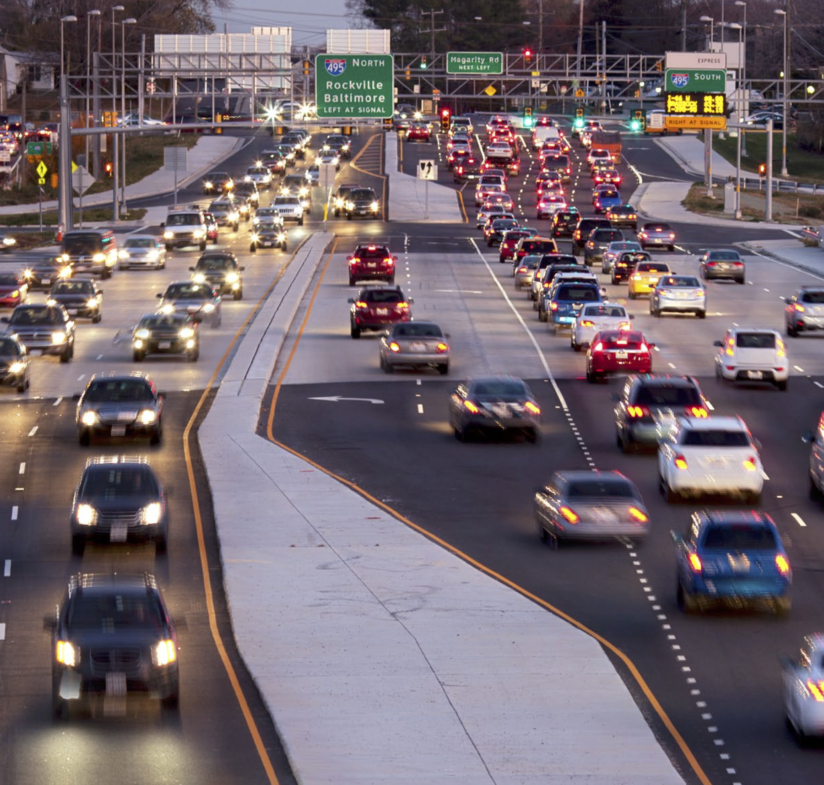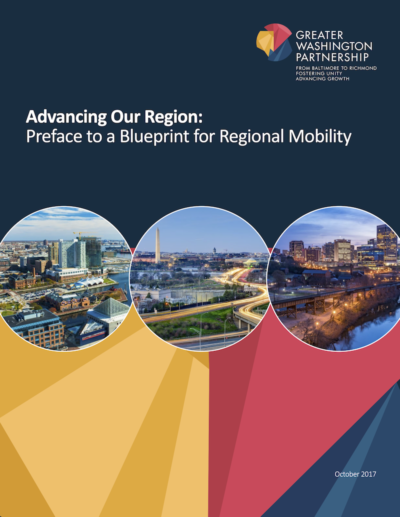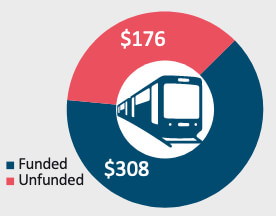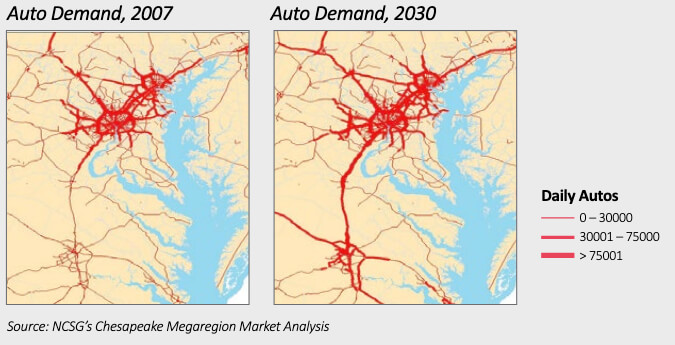Advancing Our Region: Preface to a Blueprint for Regional Mobility
Publish Date: October 2017

 Download Report »
Download Report »
The Capital Region of Baltimore, Washington, and Richmond represents the 3rd largest U.S. regional economy and the 7th largest in the world, with more than $650 billion in annual GDP. Our transportation system, which has helped drive the region’s economic success, has tremendous mobility assets compared to many peers. However, coordination of mobility and investment are not keeping pace with the needs of the region’s 10.2 million residents. It’s time we once again raise the collective expectation for our region’s transportation system, starting with a truly regional approach for improving mobility.
Nearly 50% of commuters in the Capital Region travel across county lines on a daily basis to access jobs.
2/3 of millennials in the Washington metro area would consider moving out of the region, with 80 percent citing “horrendous traffic” for making their daily lives and future prospects unsatisfactory
Source: Kogod School of Business, Greater Washington Index 2016: Millennials



Source: 2015 Urban Mobility Scorecard, Texas A&M Transportation Institute

More than 75 entities – public and private – play significant decision-making or operational role in delivering mobility options and services in our region.
Transportation funding needs through 2040 ($ in billions)

Source: Long-Range Transportation Plans for BMC, MWCOG, FAMPO and Richmond RTPO
Road Congestion in the Capital Region, 2007-2030
